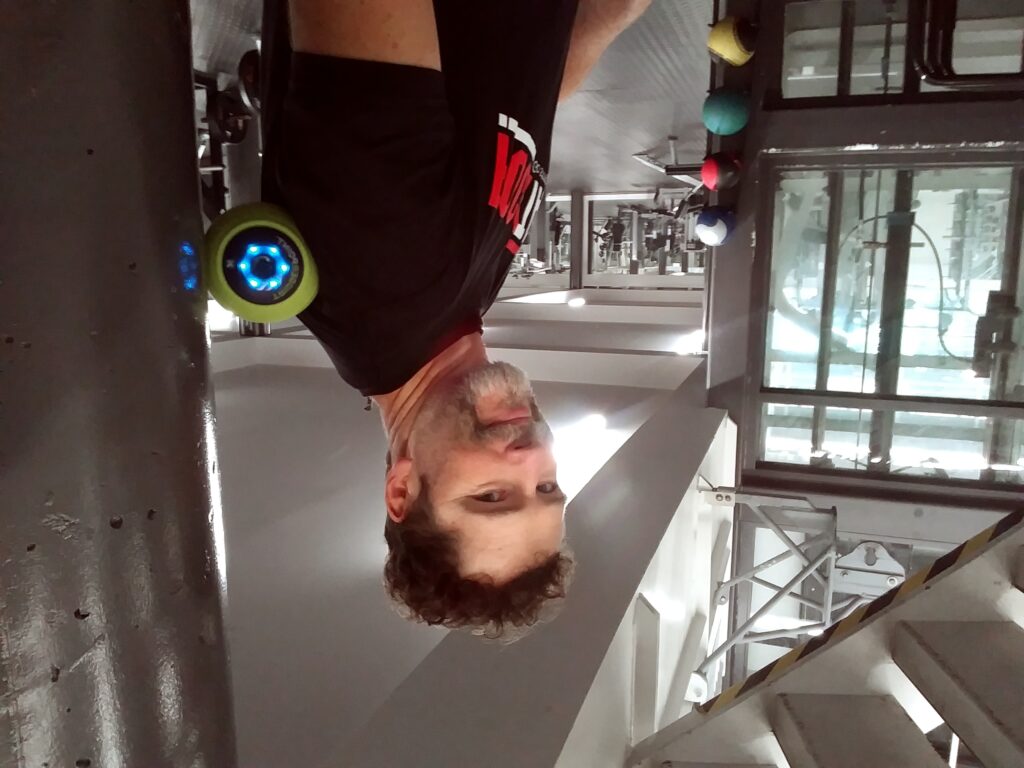by Jeff Kittmer
The shoulder is arguably one of our most mobile joints, and the most common site of injury. With its complex shape and rotator cuff support system, it is susceptible to strain and tears from repetitive movements that involve reaching overhead or rotation. Volleyball, tennis, baseball, and swimming athletes are just a few who are familiar with shoulder pain. This is due to the repetitive nature of rotational movement that their shoulders go through on a daily basis.
The shoulder joint consists of a ball from the upper arm sitting within a shallow cup of the shoulder. Holding things together is the rotator cuff system which is a complex grouping of muscles and tendons supporting the shoulder and driving its movement.
Shoulder pain is common with those who work and play with their arms held overhead or go through the shoulder’s range of motion repetitively. The symptoms are a dull ache within the shoulder, reduced arm strength, and difficulty performing activities that require you to reach overhead like brushing your hair. Here are a few tools that you can employ to reduce your pain and prevent injury in the future.
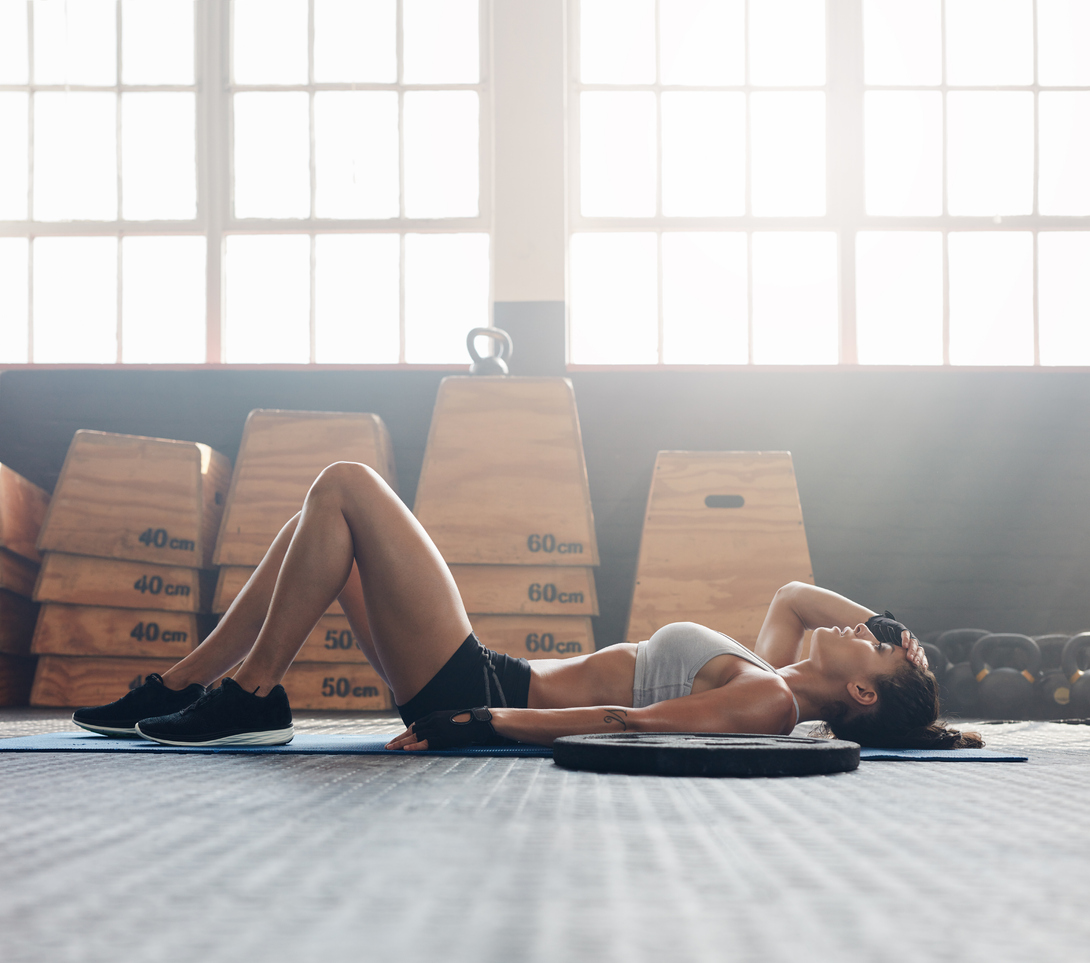
Rest
In my experience this is the least popular tool in an athlete’s recovery toolbox. Just the thought of slowing down or sitting still would drive them absolutely crazy. Our recovery time is when we grow stronger and faster. During high intensity training, muscles start to broken down and need time to heal. This is when muscle is built and our power increases. If we do not add sufficient recovery time within a training schedule, inflammation builds up and the muscles and tendons continue to break down leading to injury. Instead of stopping altogether, consider focusing on other muscle groups to give the shoulders a much needed break. Though if you have a severe strain (grade 2 – 3), then it’s time to sit on the sidelines while the muscles and tendons heal.
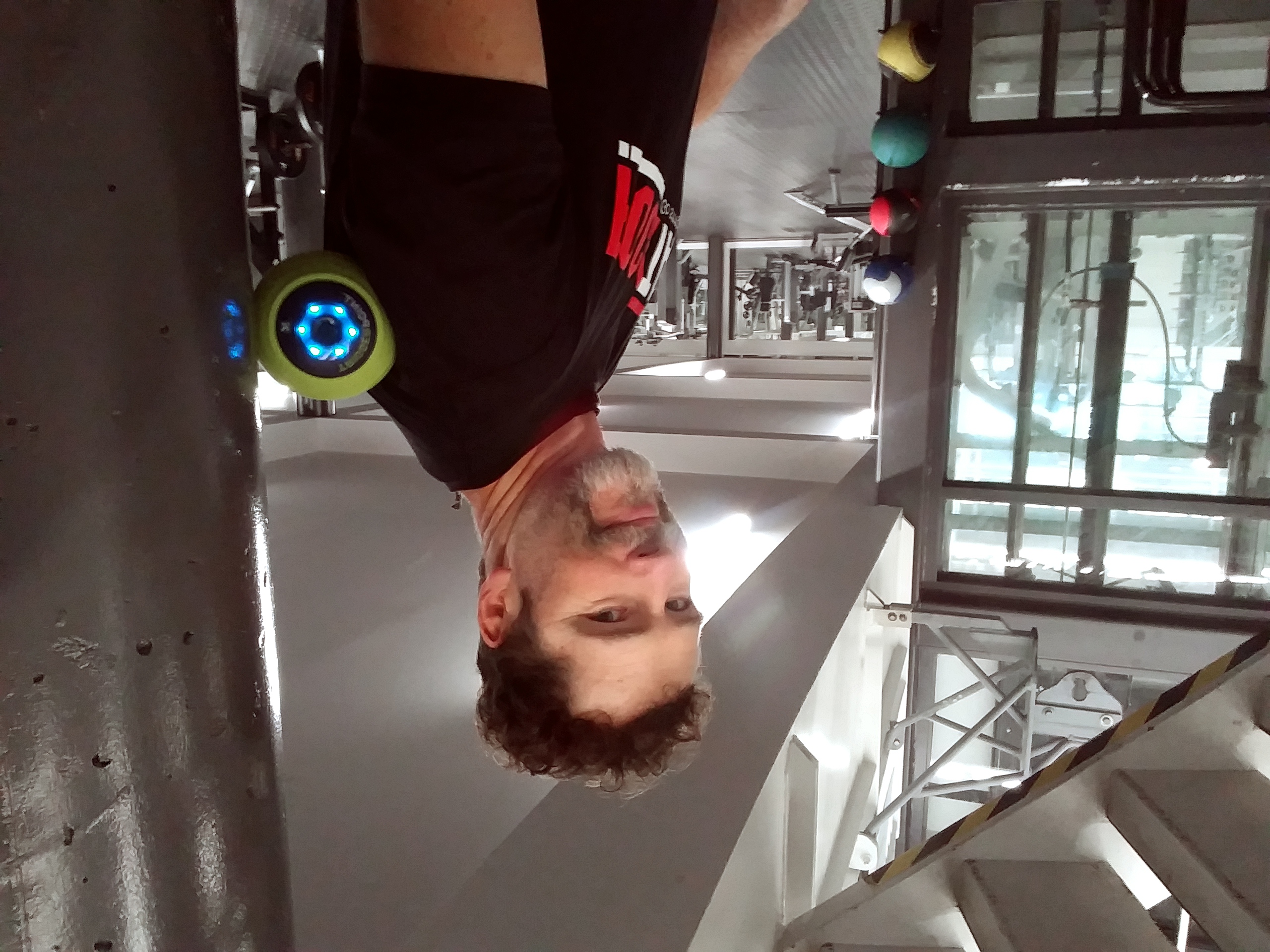
TriggerPoint MB Vibe Ball
The TriggerPoint MB Vibe is a valuable multi-directional tool for athletes. The vibrations penetrate deep into the muscle where you can specifically target those hard to reach knots and bands of tension. The main areas that I target the most when experiencing shoulder pain is the infraspinatus on the shoulder blade, the deltoids, and pectoralis major on the chest. The 3 levels of vibration help to increase blood flow, reduce soreness, and stiffness; thereby increasing your shoulder’s range of motion.
RockBand Flex
Two of the most common muscles that are injured in the rotator cuff are the supraspinatus and infraspinatus muscles. These injuries are either a result of muscle weakness or degeneration of the tendon repetitively gliding over bone. To strengthen these muscles, I use the RockBand Flex. With its numbered resistance loop system, the band offers various levels of resistance within the same band.
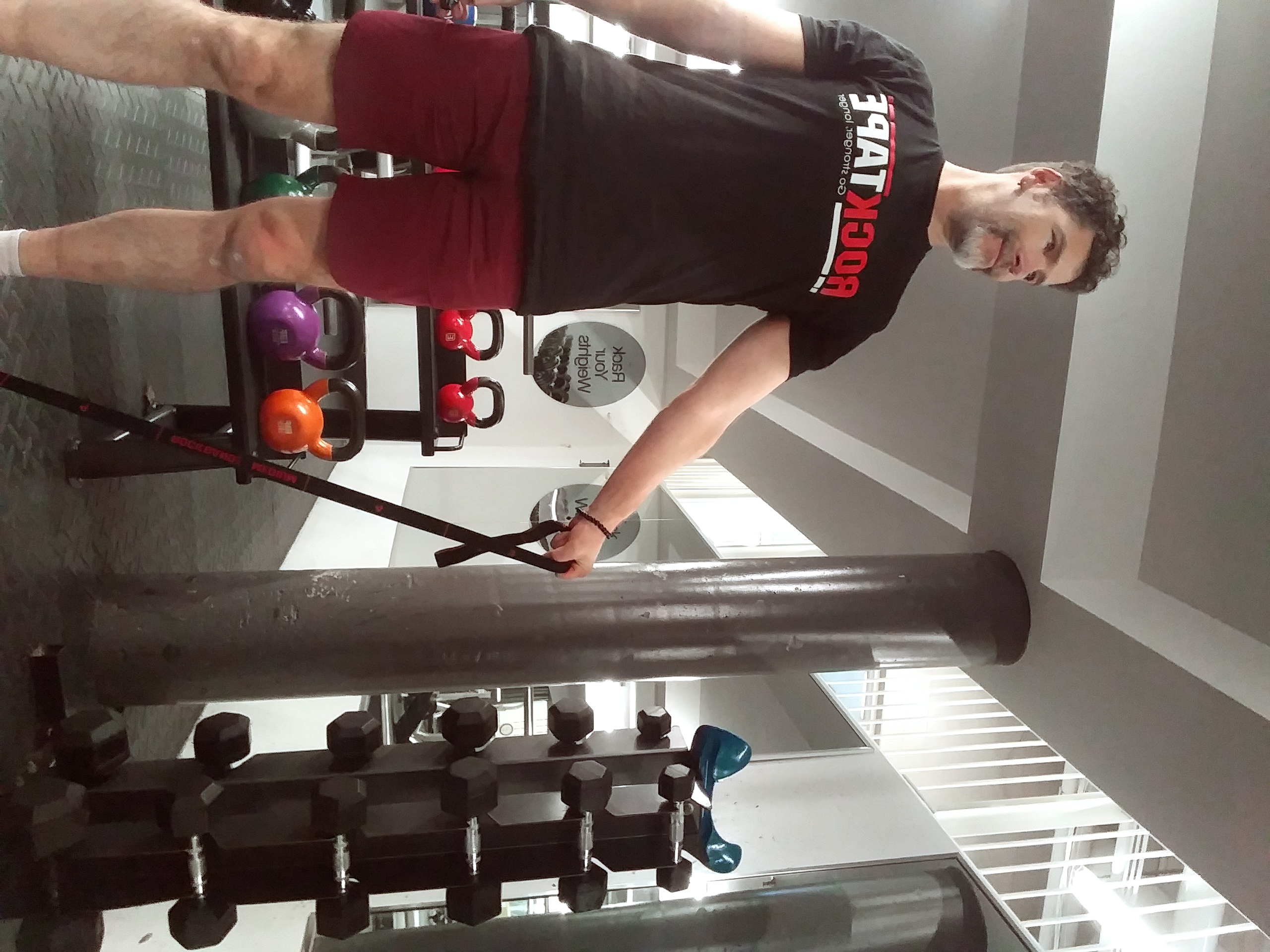
To strengthen the supraspinatus (a muscle on top of the shoulder):
1. Step on the end of the RockBand
2. Clasp an appropriate loop number for desired resistance
3. Move your arm away from you to 45 degrees
Repeat 3 sets, 10 reps
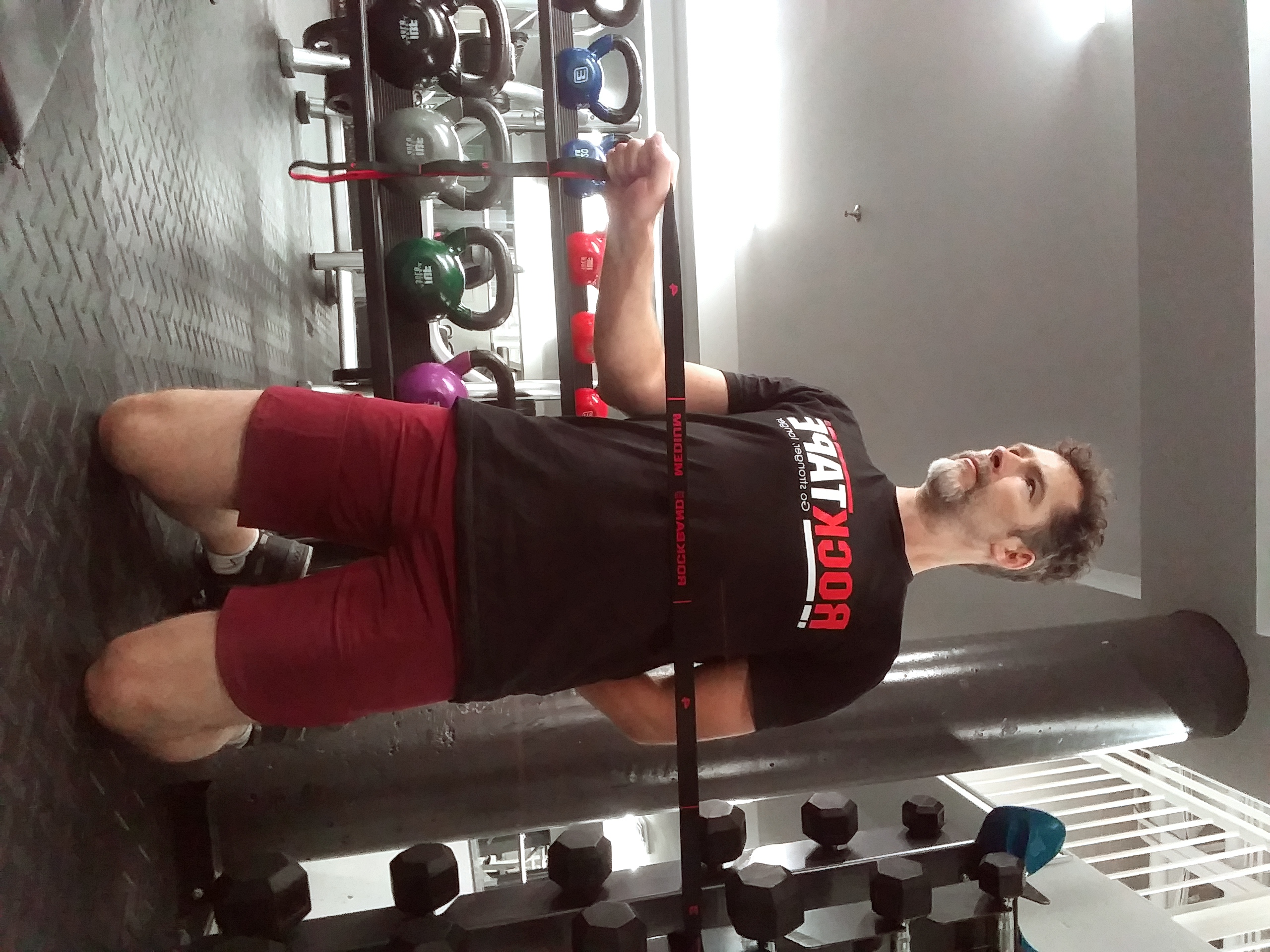
To strengthen the infraspinatus (a muscle on the shoulder blade):
1. Attach the RockBand to something solid
2. Clasp the appropriate loop number to put tension on the band.
3. Bend your elbow 90 degrees while holding the elbow against your side
4. Rotate your arm outwards while holding the elbow against your side. Placing a towel between the elbow and your body helps to cue keeping the elbow against the body.
Repeat 3 sets, 10 reps
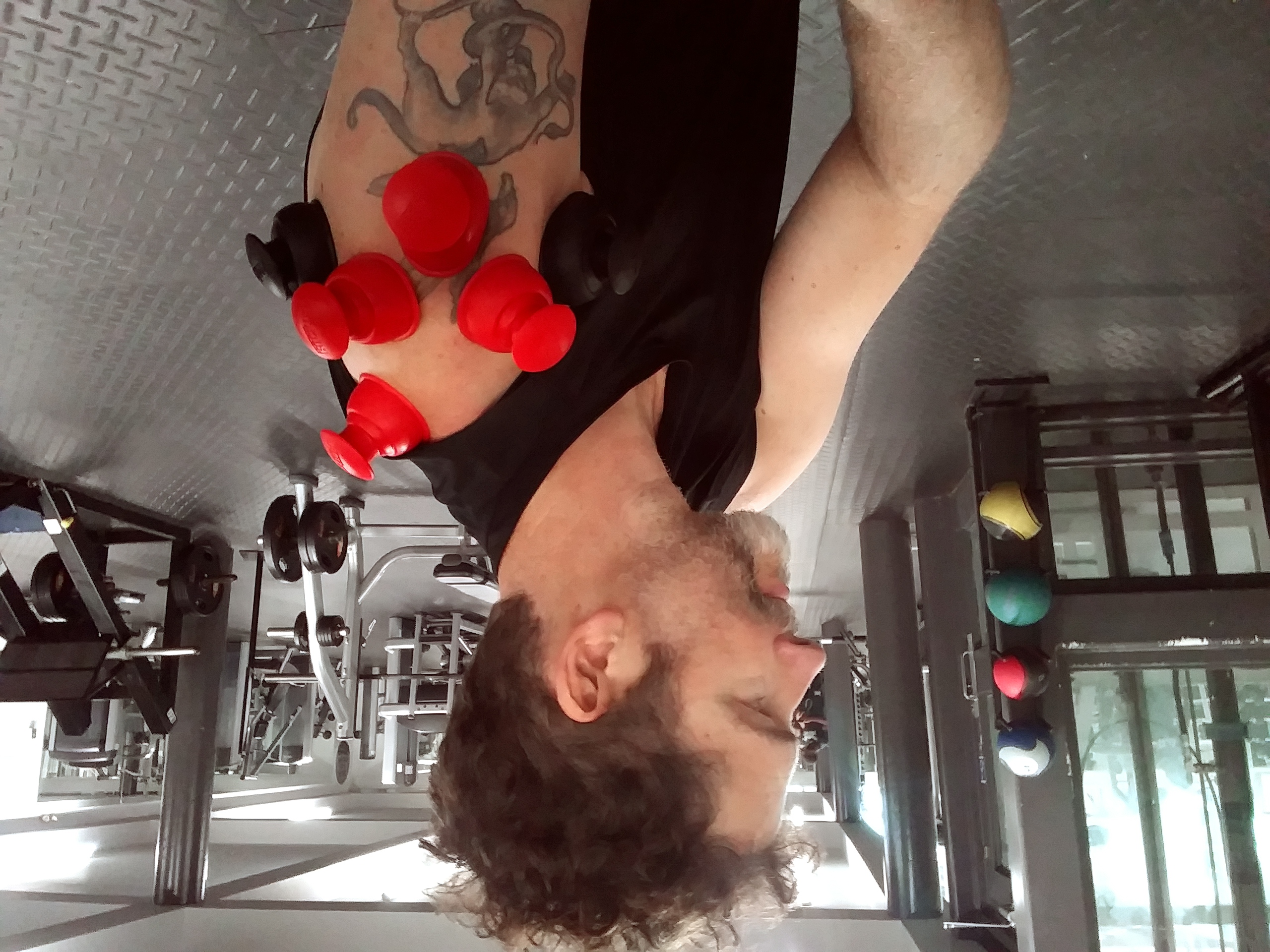
RockPods
During high intensity and repetitive training, the fascia that surrounds the shoulder can tighten and develop adhesions; restricting the range of motion and blood flow to the rotator cuff. The RockPods suction creates a lifting action within the various layers of skin, fascia, and muscle to promote freedom of movement. This lifting action separates the tissue layers encouraging increased blood flow, lymph drainage, and enhanced mobility.
There are two different levels of suction that the RockPods can create, medium and high. To apply the pods for a medium level of suction, simply push the plunger of the pods towards the target area. For a high level of suction, turn the pod inside out, place the pod on the target area, and then roll the pod on.
There are two different methods in using the pods, utilizing an external glide or internal glide. External gliding is where you clasp the pod and move it back and forth, up and down, and or twist the pod slowly to release the fascia. Internal gliding is when you move the body or limb emulating the movements that resemble your sport.
For the shoulder, apply the pods to the infraspinatus, deltoids, upper trapezius, and pectoralis major. Then move your arm through the movements that you go through during your sport employing the internal glide technique.
Shoulder pain is a complex issue faced by many occupations and athletes. In some cases, the pain will go away with time and rest. Consider doing cross training activities that compliment your sport and give your shoulders a break. Employing one, a few, or all of the tools and exercises will assist in your rapid recovery. Though, if you have been diagnosed with a grade 2 -3 strain/rotator cuff tear, you will want to visit a physio or massage therapist for treatment and rehabilitation.
Click here to find a RockDoc near you!
Click here to shop RockPods, RockBands and the MB Vibe Ball!
